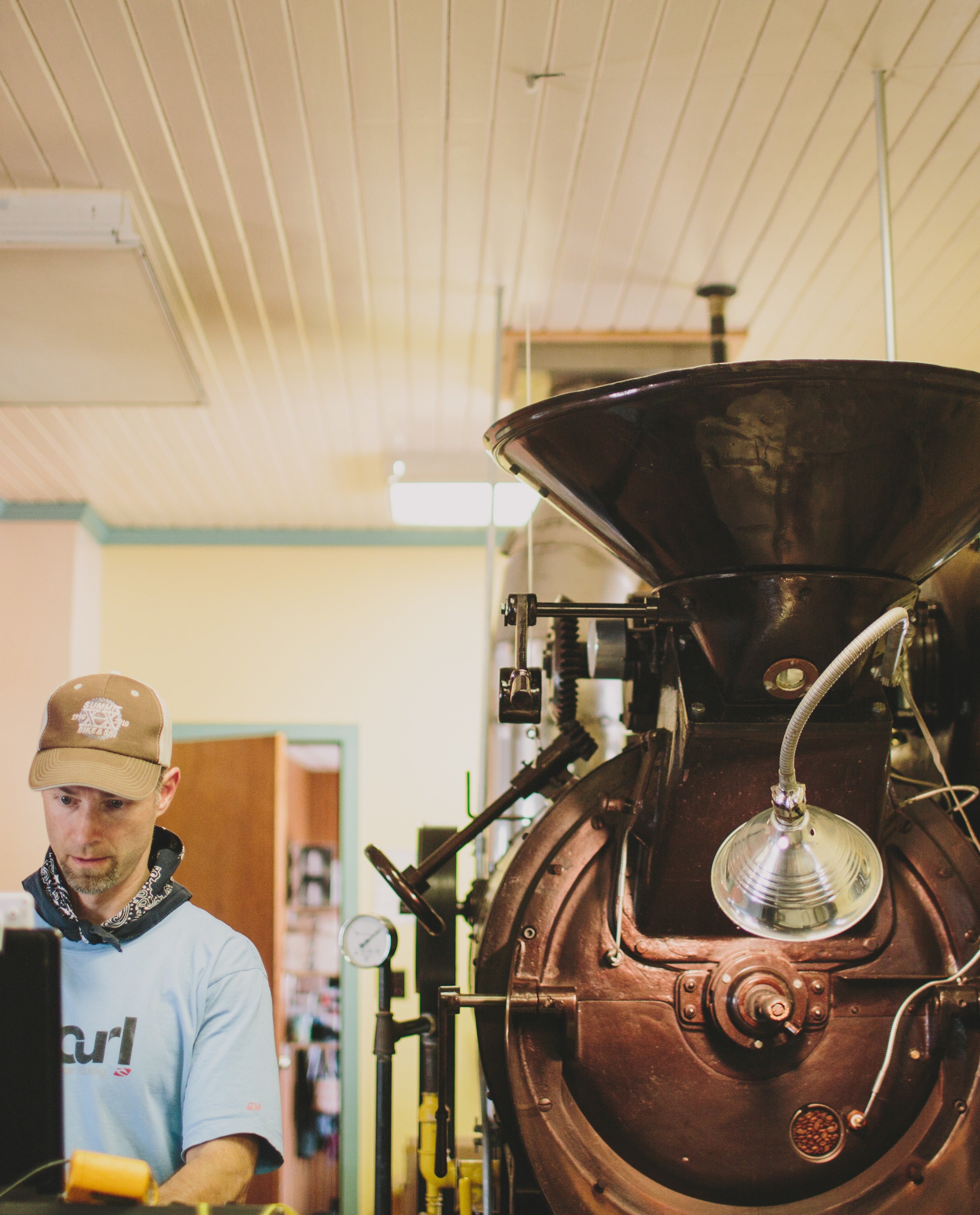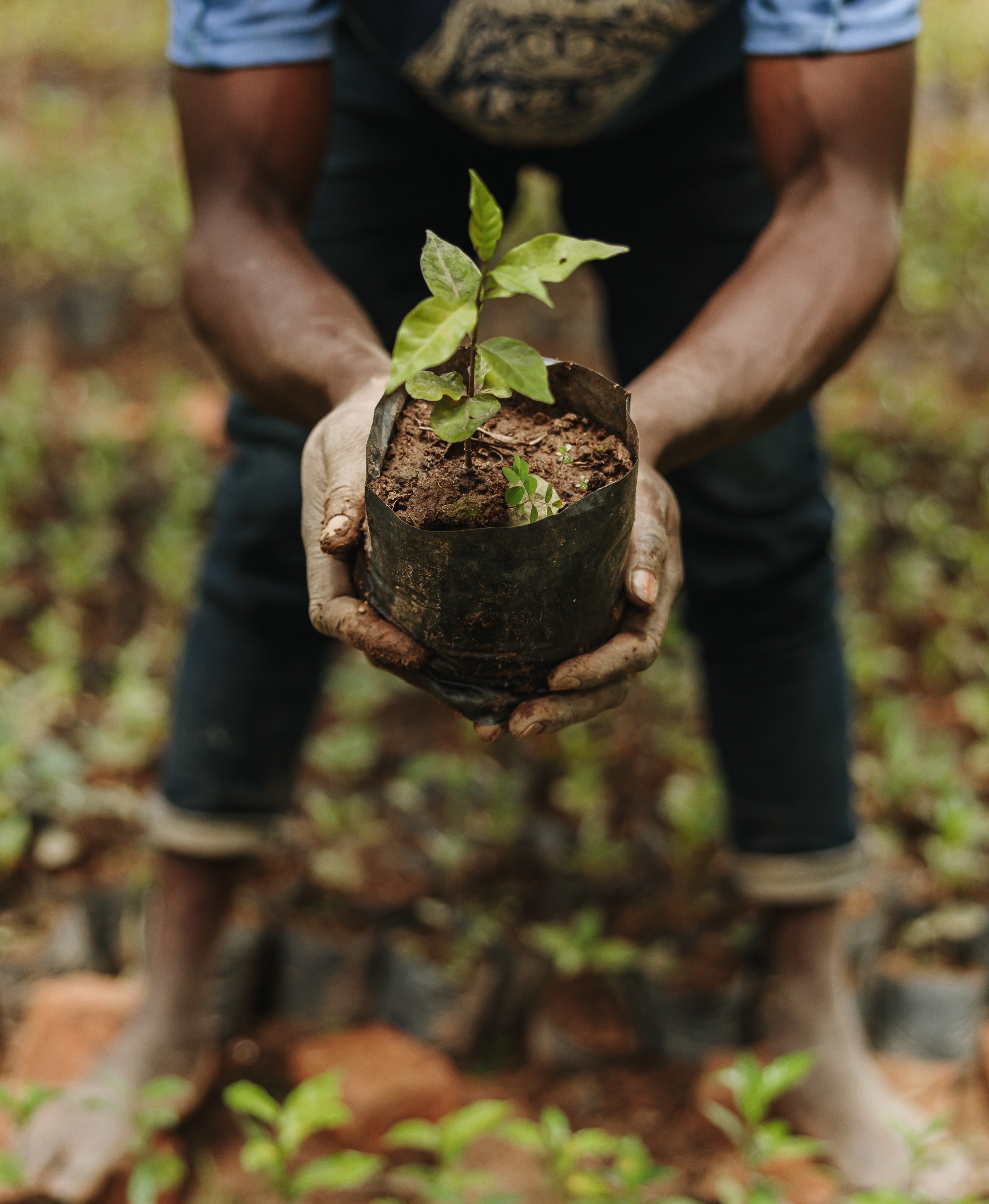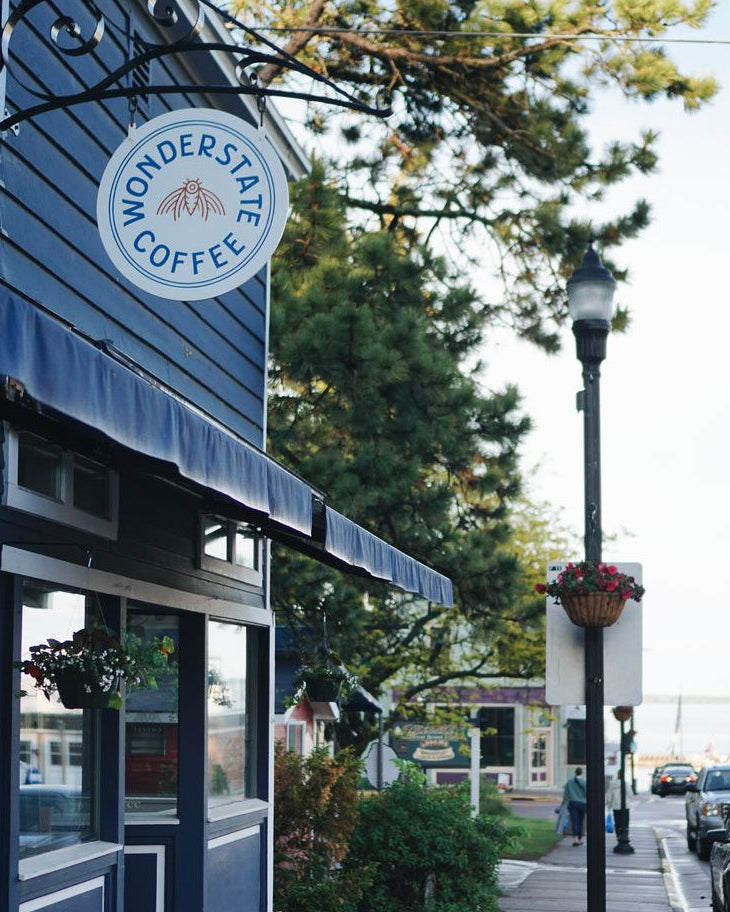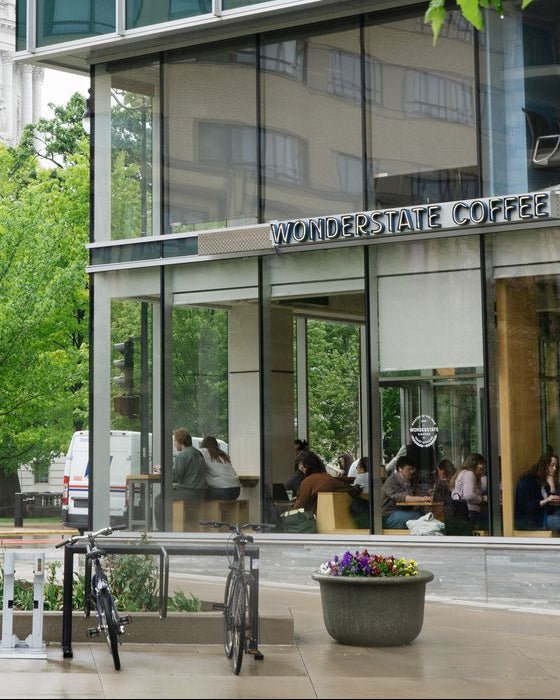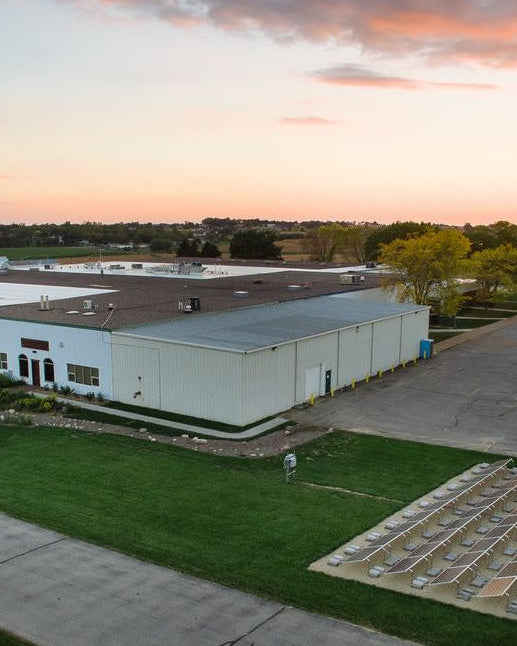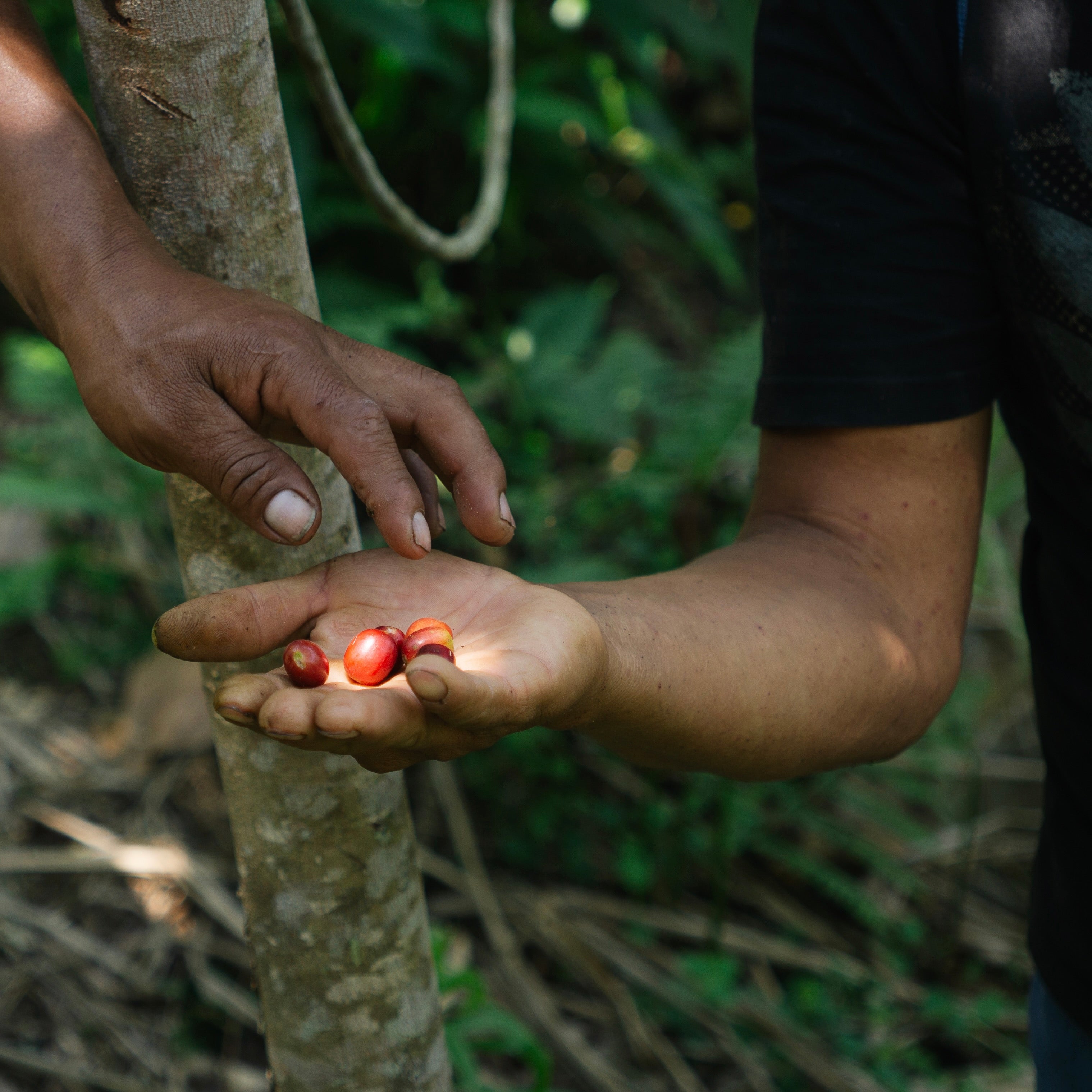2024 was a momentous year in the world of coffee prices. As we reflect on the events of the past year, our call to pay farmers more remains as urgent and important as ever. Today’s prices are reflecting a brutal truth: climate change and persistently low prices have shrunk global supplies of coffee. Without sustainable price adjustments and investments in farmers, the coffee industry will continue to revolve in and out of crisis.
Historic Market Highs
In mid-December, the commodity market price for coffee reached its highest point ever, capping a year of significant price fluctuations. This historic high is a crucial moment for the industry—one that impacts everyone from coffee farmers to coffee drinkers. However, even with these high prices, when adjusted for inflation, coffee farmers are still earning less than they did 40 years ago.
In 1977 the market hit $3.39 per pound. Adjusted for inflation, that price would be equivalent to $17.65 today. While this year’s $3.50 market price may seem impressive, it falls far short of what farmers need and deserve. Furthermore, it is significantly lower than the average inflation-adjusted prices over the last 50 years.
In 2017 we set a minimum price paid to farmers. While many of our coffee producers are paid more than our minimum price, no farmer is ever paid less. We’ve continued to increase this price regardless of the commodity market. As of today, our minimum price guarantee is $3.15 per pound.
Currently, our minimum price sits below the C-market, which is known for its unpredictable peaks and valleys. However, while the market fluctuates, our commitment remains steady. It’s during those inevitable valleys that our guarantee makes a difference for the producers we partner with.

What’s Driving the Price Surge?
The price increase is the result of myriad factors. Coffee farming has become harder, costlier, and riskier. Weather shocks, labor shortages, and climate change-induced pests and diseases have reduced harvests worldwide. At the same time, global demand for coffee continues to rise. This imbalance between supply and demand pushed the commodity price from around $1.50 per pound to the $3.50 spike we experienced in late 2024.
This surge has wide-reaching implications for the industry:
- For Roasters: Many roasters will face significant challenges, especially those reliant on very low coffee prices and high profit margins.
- For Consumers: Price increases throughout the industry are inevitable, including from us. However, if the market price decreases, watch closely to see if companies maintain high consumer prices while reducing what they pay farmers. Unfortunately, this pattern often leads to increased profits at the expense of those who grow the coffee.
A Broken System
The current coffee pricing system is undeniably broken. For decades, unconscionably low prices have perpetuated a worsening cycle of poverty for millions of coffee farmers and workers globally.

The challenges facing coffee farmers go far beyond fluctuating market prices. The systemic economic injustices within the coffee industry reveal a deep imbalance:
-
Low Wages Below Living Standards
Many coffee farmers, especially in developing countries, receive payments for their crops that are far below a living wage. These payments often do not cover the cost of production and forces farmers into a cycle of poverty. -
Power Imbalance in the Supply Chain
Large multinational corporations and intermediaries dominate the supply chain, driving down prices and extracting a disproportionate share of the profits. Farmers are left with little leverage to negotiate fair compensation. -
Debt Dependency
To maintain operations, many farmers take out loans to buy seeds, fertilizers, and equipment. When coffee prices drop—which they often do—farmers struggle to repay their debts. -
Unfair Trade Practices
Coffee farmers frequently lack access to direct markets and depend on intermediaries who may exploit their vulnerability. In many cases, farmers are paid less than the cost of production because they have no alternative buyers. -
Environmental Degradation
Coffee farming often comes with significant environmental challenges, such as deforestation and soil degradation. Farmers frequently lack resources for sustainable farming practices, further exacerbating their financial strain. -
Systemic Oppression
Many coffee farmers, particularly in regions with limited economic opportunities, are born into farming communities and have little access to alternative livelihoods. This lack of choice reinforces a system where they are dependent on unfair wages for survival.
The Path Forward
The solution is clear: we all need to pay more for coffee. This is not only an economic necessity but also a moral obligation. Those of us who appreciate this wonderful beverage must understand the stakes. Without fair compensation, farmers cannot afford to invest in best practices that protect the environment and ensure long-term sustainability. Without meaningful change, we will first face limited access to high-quality coffee and eventually experience prolonged shortages of all coffee.
It is time for all of us—producers, roasters, and consumers—to advocate for and support a coffee industry that values and uplifts its farmers. Only then can we ensure a future where coffee remains a vital and vibrant part of our lives.
Read more

Join us in experimenting with this delightful Ethiopia natural from Tarmiru Tadesse. We have been using different brew methods to extract different expressions of flavor from this uniquely layered ...

Wonderstate Coffee is honored to be recognized as the 2025 Macro Roaster of the Year by Roast magazine, an award that celebrates superior coffee quality, dedication to sustainability, and a commitm...


